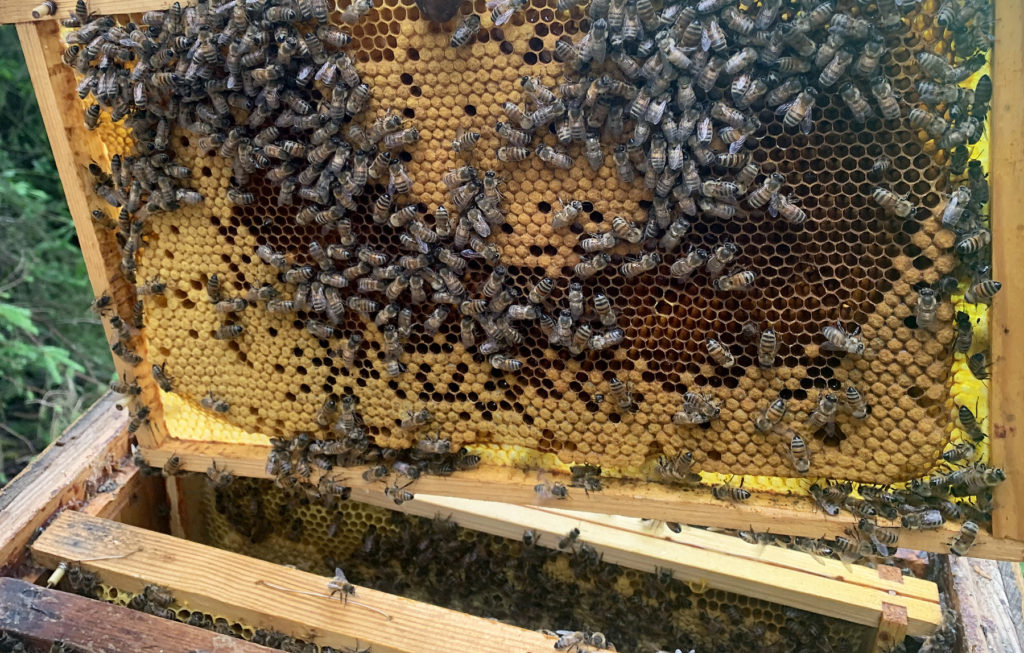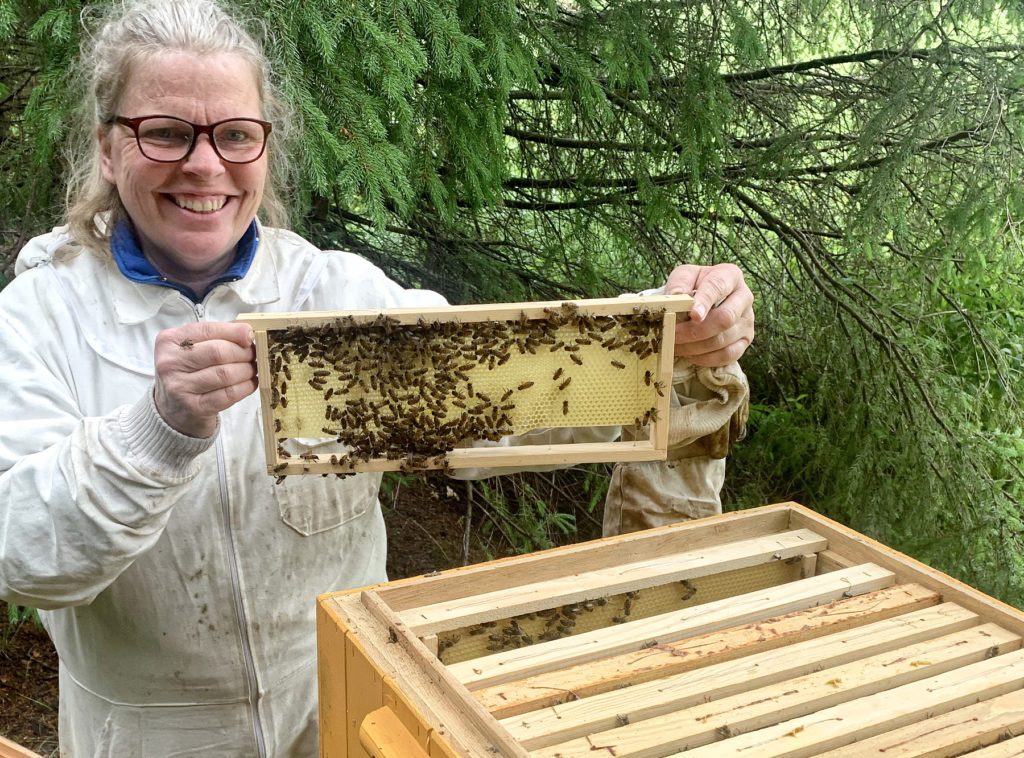
The local bee club in the small town of Hallsberg on 59°N 15°E invites to a meeting on breeding varroa resistant bees. Saturday Oct 24 at 10 am – 14 pm. Venue Garveriet, Bra & Begagnat in Hallsberg. WGS 84 N 59 04.252´ E 15 07.739´
Coffee, tea & sandwich that keeps hunger away for a while for SEK 50 is paid on the spot. Register in advance to Peter Tesell, chairman of Hallsberg-Kumla bee club, tesell@telia.com
Language will be Swedish. But should it happen you don’t understand Swedish and turn up you are welcome of course. I just want to inform you what’s going on here. Hope you are doing well wherever you are in the world!
– We would like you to know how you work to achieve varroa resistance in your bees so that they do not need control help from you.
– How far have you come? Some have come further than us in Hallsberg, some have just started their work.

Annelie Bosdotter is one of those who will share her experiences. She has not treated her small Buckfast stock in 10 years, annual losses have always been low.
If the rule still applies on Oct 24 concerning corona restrictions, we will admit 50 participants. The room is large so you can sit sparsely if you want. Welcome!
In the Hallsberg area, we have reduced the use of pesticides against varroa for a number of years. Three years ago, just over 50% received control against varroa (thymol), just under 50% two years ago, this year about 20%. The chemical that we think is suitable to be used whenever needed (but not too late in the season when the amount of brood is low) is thymol.
There are now a number of colonies that received their last (latest?) treatment in 2015, another group in 2016, a third in 2017, and so on. The limit for treatment is 3% infestation, preferably measured twice a year AND check for any wingless bees that have ended up on a 0.5×0.5 meter hard board in front of the entrance. At least 3 (fewer, check soon again) wingless bees there – check the degree of infestation or treat immediately. How does the colony develop? How strong is it? How dense or hollow capped brood frames are there in the colony?
The magnitude of the risk of reinvasion is significant. How many colonies per apiary do you have and how far is it to the next apiary. How big an entrance the bees have determines how easy or difficult they have to defend their colony against intruders. We like to use at least 4 well-built combs with a cell size of 4.9 mm in the middle of the brood nest.
We are three beekeepers with a total of about 350 colonies located in the center of the area. How the population dominates the area is important for the long-term development of the stock. The queens are mated in the center of the area where most good colonies are located. The worst colonies should be relocated outside or to the outskirts of the area. There the queens are replaced. Splits are made from the best colonies. Those are set up to make their own queens. Also queens are bred from colonies with lowest infestation and at least a year without treatment. Those so called walk away splits are important for reproducing strong microbiome (the microbial balance in colonies is important for resistance to disease-causing viruses). You can also inoculate a comb of capped brood from a resistant colony to splits from bad colonies (which also get new queens), to get additional worker bees with a good genetic set up and which also take with it good microbiome and thus enhance the immune system against viruses.
Hello beekeepers!
We are moving to Sweden right now and will live in the elgonbee area forever next spring. What luck!
It’s Askersund commune which will be our new home.
We already placed three colonies on our swedish property, stock coming from Erik Österlund, plus he and me creating two splits, so I winter 5 colonies, well, Erik is caring for them because we had some small problems traveling with the Covid19 restrictions. Erik, thank you very much for all the help!
In germany I gave my bees to a friend. I have treated only one of the colonies with thymol in 6 years.
The bees surviving are elgon and buckfast. Highest number of hives we had was 16, winter losses were an average 50%.
I hope to take part in the meetings of the associating next year. Have to learn Swedish first, which I started. I would very much like to tell you about my experience in germany and my thoughts on keeping bees without treatments. If you are interested.
Plus, I changed hive configurations and will change some managements to have it easier on working the bees. It must be more practical and we want to avoid too much heavy lifting. Also do a more natural kind of beekeeping with only one brood box.
Also we want to change to natural comb. If we have a colony which has problems with the mite we plan to use a trap comb in future, give the queen one more chance to adapt before shifting her. Well, many ideas and I look forward to go on with my hobbyist research!
Go on with the good work!
Sibylle/ Wolfgang